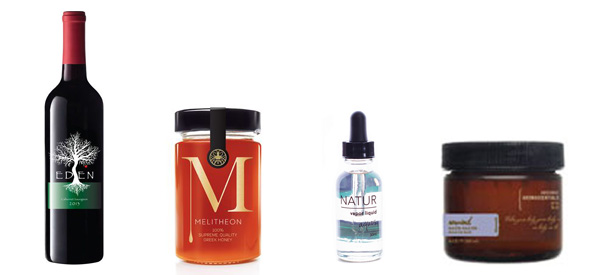The vast majority of product labels that you see on the shelves of your local supermarket are probably basic opaque labels (typically on white material). The product inside the packaging can’t be seen through the label material. While this traditional type of label printed on paper or plastic can be extremely effective, there is another option that takes a more minimal approach to labeling. Printing transparent product labels on a clear plastic material can allow for a clean, minimalist design that allows the product to be featured through the packaging.
While transparent labels are not right for every product, they can work wonders for some. The benefit of having a custom transparent label is that the label can be designed to allow the product inside the packaging to be part of the presentation itself.
Minimalist design has been a growing trend for several years in many areas of design, including label design. Choosing a transparent product label can go a long way in achieving this “no label” effect. The image below is a great example of how products from different categories have effectively used clear product labels to allow the contents to become part of the presentation.

While transparent product labels may not be used as abundantly as opaque labels, they can still be great choices for many different product categories. Whether you’re labeling a beverage, bath and body product, e-liquid for electronic cigarettes, neutraceuticals, or even food, custom transparent labels can help your product stand out from the rest.
Along with the unique presentation that can be achieved with clear product labels, there are several factors to consider when designing the artwork for your labels. When creating artwork for custom transparent labels, the designer needs to remember that any area that does not have a specific image or color assigned will be transparent on the finished label.
Also, it’s important to understand that any significant images or text may be affected by the color of the product itself, because the inks are not completely opaque. For example, if your design includes some yellow elements and the product itself is blue, some of that blue may “show through” the yellow ink and create a green look. To minimize this effect, you need to create a white layer directly behind those areas in the artwork. We then print white ink wherever the white layer is present – to act as a light blocker and add some opacity. But please understand that depending on the colors involved, there may still be some unexpected results when you apply the labels to your containers. It’s always worth testing first before assuming too much.
One other important tip is that whenever labels are applied to products, there is the possibility for some “bubbling” to occur – where air is trapped under the label in various spots during application. If your design makes significant use of white ink to effectively emulate a white background, any bubbles will appear more obvious. Conversely, a clear background may still have bubbles, but they won’t usually be visible to the eye – or at least won’t be as distracting.
Since there are some unique design requirements for printing clear product labels, it’s important that you don’t simply place an order and expect the labels to look how you visualized them – particularly when they’re applied to your product. Please fee free to ask us if you’re concerned or confused – we can try to help, but in the end we can’t predict every possible outcome, and we always recommend you do some thorough testing before committing to a large order.
Want to know more? See our resources for more information on clear product labels.